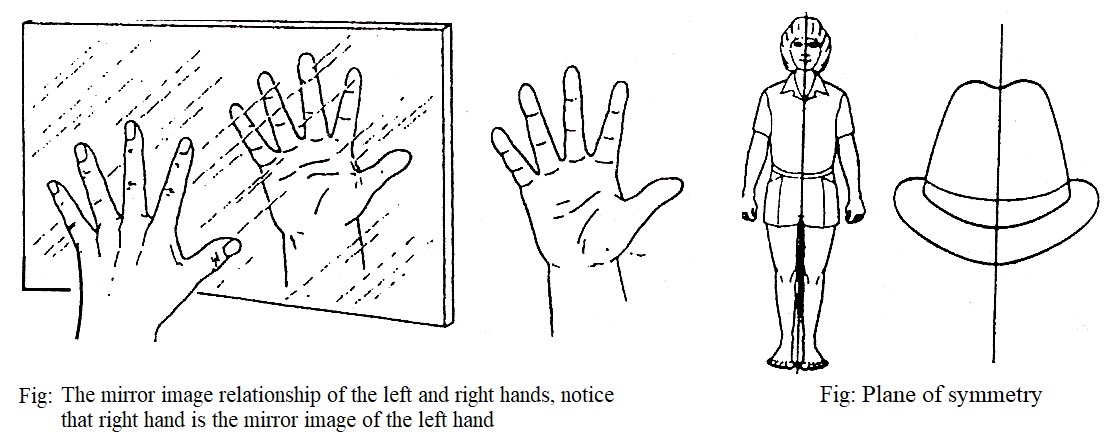A plane which divides an object into two identical halves, is called plane of symmetry. e.g. a person or hat has a plane of symmetry. But a person’s hand or gloves lack a plane of symmetry.
An object lacking of a plane of symmetry is called Dissymmetric or Chiral. A symmetric object is referred to as Achiral.

A dissymmetric object cannot be superimposed on its mirror image. A left hand, for example, does not posses a plane of symmetry, and its mirror image is not another left hand but right hand shown in the fig. above. The two are not identical, because they cannot be superimposed. If we were to lay one hand on top of the other, the fingers and the thumbs would clash.
Asymmetric (or Chiral) carbon atom: A carbon which is bonded to four different groups is called an asymmetric carbon atom. For examples,

Note:
The term asymmetric carbon atom is rather misleading. It only means that a carbon atom is bonded to different groups and that a molecule of this type lacks of symmetry. Such molecule is called asymmetric i.e. without symmetry. Presently the term dissymmetric or chiral molecule is often used for asymmetric molecules.e.g.